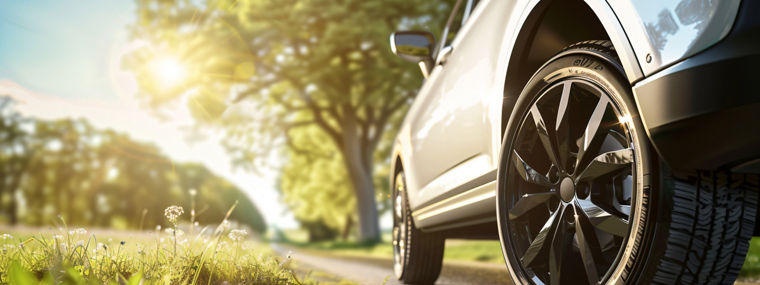Automotive solutions for body, chassis, interior, exterior & new mobility
Evonik provides innovative materials and processes for cost efficiency and environmentally friendly automotive systems as well as materials resistant to chemical or mechanical stresses
Superior Protection and Aesthetic Excellence
In the automotive industry, car body coatings uses a sophisticated multi-layer system primarily based on epoxy chemistry. The first layer, Cathodic Electro Deposition (CED), provides corrosion protection, while the primer layer enhances durability and longevity by smoothing surface irregularities, effectively shielding against mechanical impacts like stone chips.
Polyurethane Coatings: Aesthetic and technical superiority
Water-based polyurethane dispersions (PUDs) are used in subsequent layers, including the base layer, which provides pigments for the vehicle's color and visual appeal. The final layer, the topcoat, delivers exceptional decoration and protection. It ensures excellent leveling for a smooth surface for a perfect gloss finish while safeguarding the underlying coatings from three key types of damage:
- UV radiation: Protecting against polymer degradation caused by sunlight
- Chemical exposure: Shielding the topcoat from harmful substances like gasoline, tree sap, and bird droppings
- Mechanical impacts: Preventing scratches and other physical damages that not only impact the appearance but can also compromise the entire coating system

Enhancing PVC Plastisols
PVC Plastisols are essential, particularly in automotive paint shop operations where they provide corrosion protection, waterproofing, bonding and sealing of seams and joints. They also protect external surfaces like underbody constructions, rocker panels and sills. Effective adhesion to e-coat primed steel substrates is crucial, which can be enhanced with adhesion promoters based on polyamide or blocked isocyanate chemistry.
Our Nourybond® brand offers a comprehensive range of products to help PVC plastisol developers and formulators adapt to the challenges of modern e-coat primer systems.

Driving Innovation in Automotive Design
The trend toward lightweight, multi-material designs, along with miniaturization and increasing complexity, has heightened technical demands on components and bonding processes. Evonik Crosslinkers offers a diverse range of high-quality amine-based curing agents and accelerators for structural epoxy adhesives, enabling strong adhesion across various substrates and composite materials, including metals, polymers, glass and ceramics.
Our portfolio includes curing agents for both one-component and two-component epoxy systems, featuring renowned brands like Ancamine®, Ancamide®, Amicure®, Curezol®, and Imicure®. We provide various amine curing technologies, such as aliphatic and cycloaliphatic amines, polyamides, amidoamines, imidazoles, and different grades of dicyandiamide.
Selecting the right curing agent is crucial, as it influences key parameters like application form, mixing ratio, viscosity, processing time and curing temperature. The choice impacts the adhesive's final properties, including mechanical strength, flexibility, impact resistance, thermal stability, and chemical resistance.

Automotive Plastics (Polycarbonates)
Heat resistance, impact strength and high transparency are only a few criteria for high performance polycarbonates. For example Evonik's VESTASOL® TMC-on offers the basis to use those polycarbonates in automotive as well as medical devices and electronics.

Explore our sustainable automotive solutions today!
By integrating our advanced coating and adhesive technologies, you not only enhance your automotive applications but also contribute to a more sustainable future.

